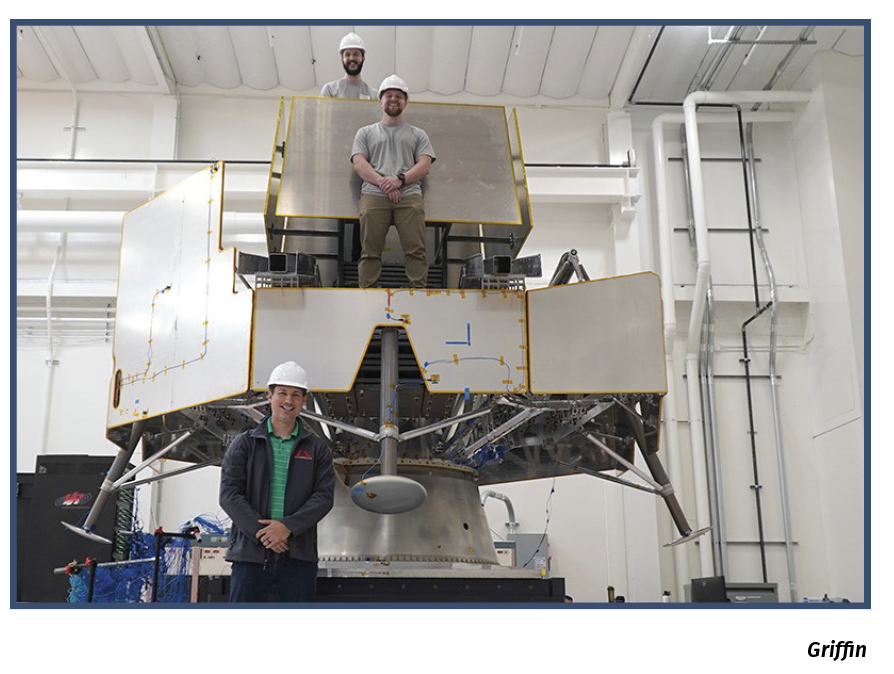Meet Griffin, Astrobotic's Next Lander
By Sheena Carroll, Pittsburgh Technology Council
 Peregrine isn’t the only lander on Astrobotic’s roster – meet their medium-class craft, Griffin! Featuring a stout and stiff aluminum frame, Griffin has a hefty 475kg payload mass capacity ideal for rovers, satellites, secondary landers, or other large payloads. Rugged, radiation-tolerant computing enables autonomous landing with unprecedented precision and safety in the demanding conditions of space.
Peregrine isn’t the only lander on Astrobotic’s roster – meet their medium-class craft, Griffin! Featuring a stout and stiff aluminum frame, Griffin has a hefty 475kg payload mass capacity ideal for rovers, satellites, secondary landers, or other large payloads. Rugged, radiation-tolerant computing enables autonomous landing with unprecedented precision and safety in the demanding conditions of space.
Griffin has flexible mounting options to accommodate a variety of payloads. Its autonomous sensor systems provide a safe and precise landing in rugged and hazardous terrain, enabling it to support robotic missions such as resource prospecting, polar volatile characterization and skylight exploration.
The lander uses a propulsion system featuring the newest space engine technology; its seven main engines perform all the spacecraft’s major maneuvers, including trans-lunar injection, trajectory correction, lunar orbit insertion and powered descent. Four clusters of altitude control thrusters maintain lander orientation throughout the mission.
Griffin uses a high-powered flight heritage transponder and a combination of low, medium and high gain antennas to relay data throughout any mission. It utilizes a panel of triple-junction solar cells to generate power and a space-grade lithium-ion battery to store energy. The solar panel is pointed towards the Sun whenever possible to provide continuous power generation, while the battery is utilized when the Sun is not visible or for quick discharge activities.
Griffin has been selected by NASA to deliver their water-hunting VIPER rover to the lunar South Pole later in 2023.